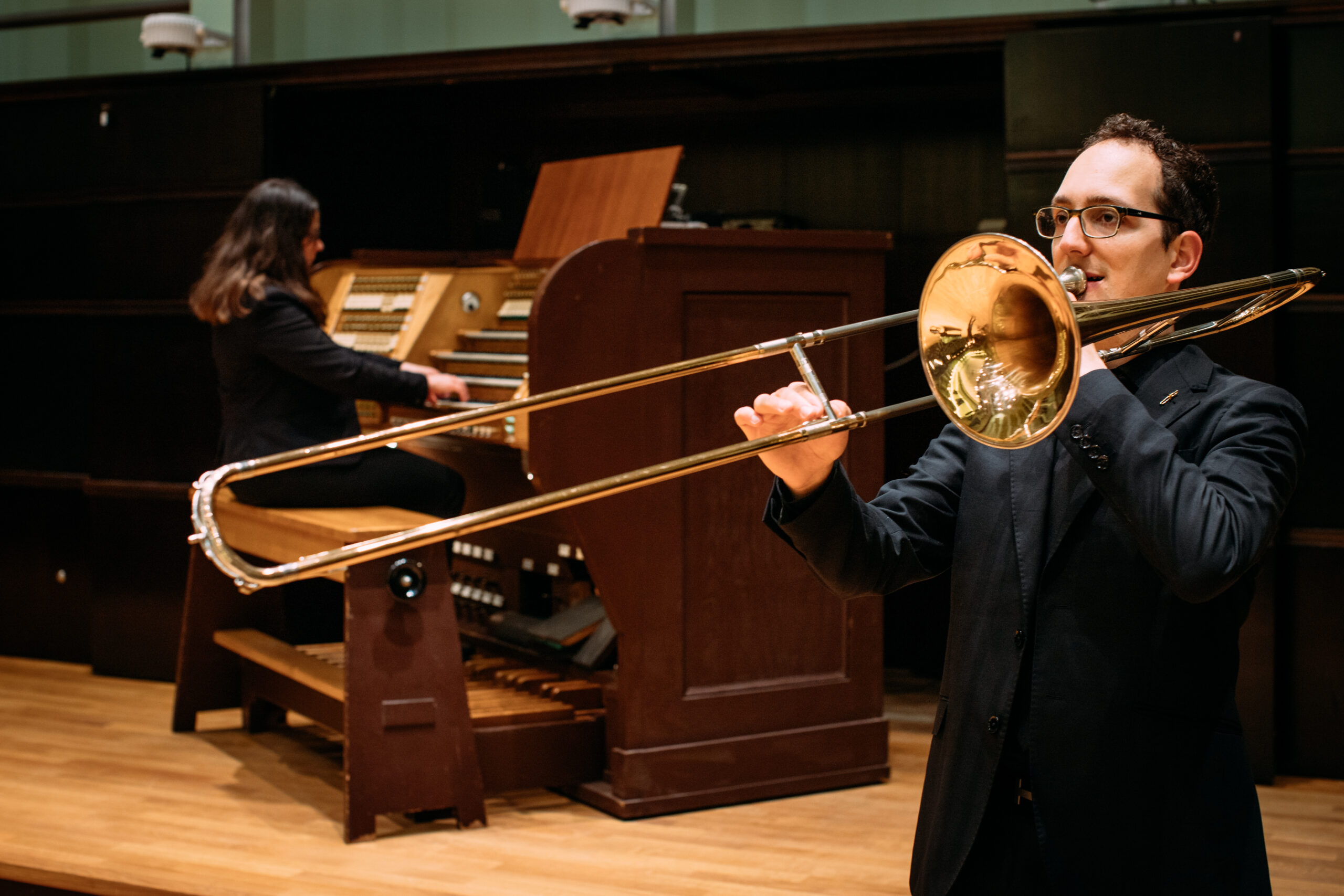Duo GlossArte
Music for trombone and organ or harpsichord
GlossArte was founded in 2017 as a research and performance platform for music for trombone and organ or harpsichord on historical instruments. GlossArte performs as a duo as well as a chamber ensemble with additional instruments.
Historical Trombones & Organs
Historical instruments and their reconstructions
GlossArte’s founding project was Diego Ortiz´ sixteenth-century Tradado de Glosas. After working through repertoire of the Spanish and Italian Renaissance and early baroque eras, they were inspired to explore classical style and historical instruments of the Romantic era. The ensemble’s focus is on historically informed performance practice as a new journey of discovery inspired by the sounds of original historical organs or period-specific instrument reconstructions. To that end, GlossArte works closely with instrument builders when developing new projects.
Salzburger und Berliner Hofkapelle
soloconcerti for trombone & strings and harpischord & strings
What connects a concerto for harpsichord and one for trombone, Johann Sebastian Bach’s most famous son and his other relatives, the Berlin and Salzburg court orchestras, and a teacher of Beethoven who prophesied a dark future for him? All of them play a role in GlossArte’s current concert project about classical style.
Der Atem des Jugendstils
Art nouveau, Jugendstil, modernism, fin de siècle: the historical era at the end of the 19th century has many names. Most of us know and love the floral elements on art nouveau windows or doors, or the beautifully curved shapes of furniture from that time. But we generally know very little about the sound of the era!
Duo GlossArte is working to change that. Together with the Franz Kuhn Trombone Quartet, which plays an original set of four trombones from the 1920s, they have developed a program of virtuoso duos for trombone and organ, demanding solo literature for both instruments and lively operatic melodies and marches for trombone quartet.

The German Sauer Organ & Kuhn Trombone
When we think of historically informed performance practice, we generally think of baroque music. But even in the 20th century, orchestral instruments and ensembles grew ever louder and significantly, concert pitch was raised from a’ = 435 Hz to 443 Hz to ensure an ever more brilliant sound for larger and larger concert halls. That raises the question of historically informed performance practice of early 20th-century repertoire.

In 2021, GlossArte researched original historic trombones built by Franz Kuhn in combination with the Sauer organ in the “Glocke” concert hall in Bremen. The results were recorded on CD and included previously unpublished works by Eckhold, Belcke, Weschke & Merkel, among others. Immediately after its release on the Dabringhaus & Grimm label in 2022, the CD was nominated for the Preis der deutschen Schallplattenkritik (German Record Critics’ Prize).


Die Programme von GlossArte
2022/23
“Salzburger und Berliner Hofkapelle”
Solokonzerte von Carl Philipp Emanuel Bach und Johann Georg Albrechtsberger
2021/22
“Der Atem des Jugendstils – Ein Hauch von Romantik”
2020/2021
„Laudate Dominum“
„Romantische Musik für Posaune & Orgel“
CD-Aufnahme „Trombone and Organ“
(Label Dabringhaus & Grimm)
„Sauer trifft Kuhn“ Konzert in der
Glocke, dem Bremer Konzerthaus Duo GlossArte: Ein moderiertes Konzert
mit Musik auf historisch romantischen Originalinstrumenten
S2019/20
„„Lobe den Herren, meine Seele“
„Erhalt uns Herr bei deinem Wort“
„Von Dresden und Hamburg“
„Audite Me“
2018/19
„Famosus“
„Todo el mundo en general“
2017/18
„Dallo splendore di Venezia“ – Vom Glanz aus Venedig; Venezianische Musik für Violine, Posaune, Zink, Orgel und Cembalo
„Ave Maris stella“
„Parnassus Musicus“


